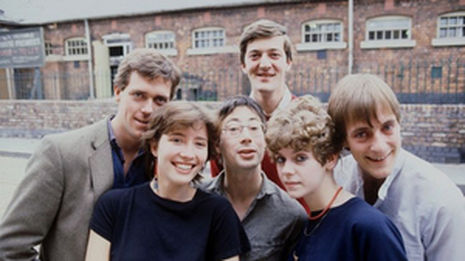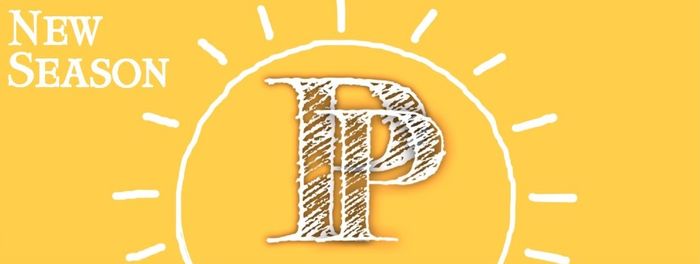Are the Footlights Fading?
“You’re not going to get famous alumni without them being a bit shit in first-year”—Toby Stinson digs into the Footlights past and present to see how the today’s group fares in the shadow of past success.

The Cambridge Footlights, “the most renowned sketch troupe of them all”, as the advert for their 2022 International Tour proclaims (quoting the Independent). Most renowned, though, for their alumni, not for current up-and-coming stars. So much of our view of this Cambridge institution is stuck firmly in the past, but what does it actually mean to be a Footlight? Were the famous alumni really that funny? And does this history matter anyway?
“People always criticise Footlights because there’s that history behind it”, Smokers Officer, Niamh Howat, tells me. “They’re like, “oh, Footlights are not as good as they used to be””. This complaint is a common one, and most Cambridge students have probably had it at one point. It is also a persistent one, which even the group’s famous alumni had to overcome. Richard Ayoade and Mathew Holness, speaking in a 1997 documentary, echo Howat’s words almost verbatim. Ayoade goes even further, saying “if you actually look back through the archives,” at the old material of Fry and Laurie, or the Pythons, “most of it’s terrible.” So maybe we’re being too harsh; maybe Footlights have always lived in their forebears’ shadows.
“We do have a reputation that we’re trying pretty desperately hard to shake of being pale, male, stale, and frail”
Taking up Richard Ayoade’s challenge, I delved into the Varsity archives, flicking through pages of old, slightly yellowed, newspaper pages for reviews of Footlights shows. I must say, the countless 4-star reviews don’t exactly sound “terrible”—“For the umpteenth year in succession, the Footlights Revue last night was a triumph,” proclaims one review from 1980—the year Stephen Fry, Hugh Laurie, and Emma Thompson were Footlights. There is no trace here of the Footlights not being what they used to be: the cast is “near perfect”, their sketches “slickly presented”, and the revue a “triumph”. But perhaps this is to be expected from such esteemed names.
Maybe cynicism is a modern infection? Looking at Ayoade’s own year, 1995, the language is more familiar. There are references to “Messers Fry & Laurie” in one review, while another begins, “I remember the days”—it seems nostalgia has set in. But for all Mathew Holness’ complaining, there is little sign of the Footlights being seen as bad. The reviewer praises a certain David Mitchell for his “natural double-act feel” with Holness, while the piece ends proclaiming, “Footlights are not just as funny as they used to be; they’re as funny as they are”. Perhaps, today’s troupe really aren’t as good as they used to be…
Or perhaps, people were easier to please. Current Footlights president, Ayush Prasad, points to the group’s double-sided history: “we do have a reputation that we’re trying pretty desperately hard to shake of being pale, male, stale, and frail.” The archives reflect this reputation. A 1980 review praises the show’s “funny voices”, including an impression of “a “cheeky” Cockney”, while the “highlight” of another smoker was “Earl Spencer-Brown’s impression of a penis.“—I’m not sure this material would get you a 5-star review today, although it might get some publicity on Camfess.
This is the same history people look back on with rose-tinted fondness, and this is precisely why the current iteration want to move away from it. “People have this idea of Footlights”, Prasad tells me, “being as it was when it was Steven Fry and Monty Python: these guys who invite their friends to become a Footlight.” Today the group’s focus is on developing new talent and fostering access to comedy. The moniker of Footlight is granted as a “reward for people who have consistently contributed to comedy,” and have shown “commitment to access”. Prasad and Howat insist Footlights is not just about the Spring Revue or who gets to call themselves a Footlight, but rather it is about the smokers, where people can practice material; about the socials, where writers bounce ideas around; about creating a space where anyone is welcome. Such openness, Howat says, “makes the comedy better at the end of the day, because if people have a diverse range of backgrounds and life experiences […] you can make more jokes out of that.”
Fostering such diversity requires a nuanced approach to Footlights’ history. The committee is trying to reframe their image away from nepotism and dinner jackets. “A lot of freshers say you’ve got all these famous alumni; I don’t think I’m good enough,” Howat tells me. “And we say, no, you are! We want to help make you that famous alumni.” However, this off-putting image is what facilitates their new inclusivity. “We are lucky,” Prasad acknowledges, “to have a well-recognised brand name, so that we can pull people in” with the promise of future stars. “We can get that recognition, we can get that funding, we can provide that platform using this history.”
But, perhaps us audiences also need a nuanced approach. Yes, the name convinces us we could be seeing the next Olivia Coleman, but these are just students honing their craft. Even John Cleese said his first Footlights show “wasn’t terribly good”. The archive reviews consistently agree—Earl Spencer-Brown’s first smoker is dubbed “pathetically juvenile,” elsewhere even David Mitchell’s presence couldn’t prevent “lengthy pauses”. Still, a reviewer notes, “there is a great deal of raw talent and good material out there,” and perhaps this is how we should view the Footlights. It is certainly what Prasad wishes: “a place where, when people look back ten or twenty years after they’ve graduated, they think I started there. This is where I did it for the first time. This is where I got the chance”.But, I guess being viewed as funny wouldn’t hurt either.
 Comment / Plastic pubs: the problem with Cambridge alehouses 5 January 2026
Comment / Plastic pubs: the problem with Cambridge alehouses 5 January 2026 News / Uni-linked firms rank among Cambridgeshire’s largest7 January 2026
News / Uni-linked firms rank among Cambridgeshire’s largest7 January 2026 News / New movement ‘Cambridge is Chopped’ launched to fight against hate crime7 January 2026
News / New movement ‘Cambridge is Chopped’ launched to fight against hate crime7 January 2026 News / SU stops offering student discounts8 January 2026
News / SU stops offering student discounts8 January 2026 News / Cambridge businesses concerned infrastructure delays will hurt growth5 January 2026
News / Cambridge businesses concerned infrastructure delays will hurt growth5 January 2026









